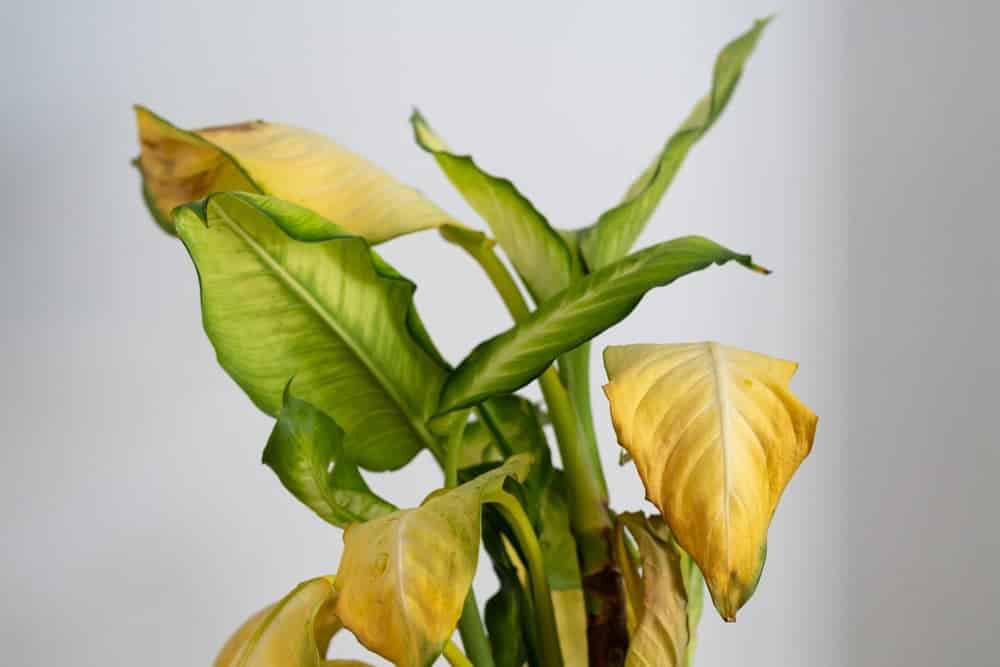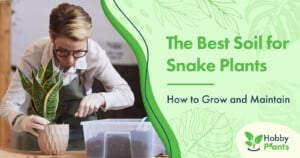The soil of your plants feels dry so you water them but then you notice that it is not looking too good.
Are you over-watering or under-watering your plant? For many, if the plant does not look healthy it seems like they need more water but that is not always the case. In landscaping, over-watering your plants is one of the biggest issues with growing plants.
What Does Overwatering Mean
In simple terms, it means that you are drowning your plant. There is space between the particles of soil and it is filled with oxygen. If the soil is constantly wet there will not be enough air pockets. The plants will be unable to breathe because they cannot take up oxygen with the roots.
Signs of Overwatering Your Plants
1. Plant is wilting
This is what happens when your plant is not able to breathe through their roots because of too much water. Some think that when a plant wilts, it needs water but this is not always the case. It can wilt because it is drowning.
2. Leaves
If the tips of the leaves of the plant turn brown, this is one of the quickest ways to tell if your plant has been over-watered. It is one of the first signs. Sometimes the entire leaf will turn brown. If the leaves feel limp and soft in your hand, you have over-watered them. If the young and old leaves start to fall too soon with buds not opening up these are signs of too much water. Although it is the leaves that are falling off or turning colors, it is the roots that are the cause of the problem. There is too much water and they are deprived of oxygen so the plant does not receive all the moisture for having healthy leaves. You may also see some brown discoloration appearing along the edges and between the leaf veins.

3. EDMA
This is a form of abnormal water retention in your plants. It is often influenced by the environment. What happens is that the roots of the plant absorb more water than they can use. The water pressure starts to build in the cells of the leave and eventually they will burst and form blisters. Once they have erupted, they will be white, tan, or brown warty growths. The plant will also start to start to form indentations right above the growths on the top sides of the leaves.
4. Rot
When a plant is over-watered, it makes them more susceptible to fungal infections, pests, and bacterial diseases. When they become infected by fungal pathogens such as Pythium, the crown, root, and stem rot occurs. When the plant develops rot, the foliage will start to turn yellow and become dull looking. The roots and stems will become soft, break easily, and the tips will start to turn brown. Because the roots are decaying, the plant will eventually die.
5. Yellow leaves
Sometimes the leaves will even turn yellow and the plant will have stunted slow growth. You will notice also that the new growth is falling from the plant.
Causes of Over-Watering
Of course, the most obvious reason is that you have given your plants too much water but there could be other causes. The plants could be growing into compacted soils or in poorly drained areas. One type of soil that can become waterlogged is clay, so it is best not to use this type of soil to put plants in.
Preventing Over-Watering
One way to prevent over-watering is to check the soil on a regular basis. Do not just touch the soil because it can feel dry. Push your finger into the soil at least an inch or two to see how moist it is. You can purchase moisture meters to help with watering. All you need to do is push it into the root ball and you will see how much water is there in the soil. Be sure that you water deeply when you water your plants, which will mean that you can water them less frequently. If the cause is due to soil that is not draining right, you incorporate things such as straw, peat, or wood chips.
If you think that your plants are starting to drown, all is not lost as you can just hold off watering your plants for a few days. This will give your plant a chance to improve. If you are not seeing any improvement after a week or two, you can re-pot your plant. Just gently take your plant out and shake off the old dirt and look for any rotten roots. If you see any, cut them off using clean scissors. Clean out the pot with a little diluted bleach and warm water and dry. Now it is ready for new soil and the plant. You can also aerate the soil to make sure that oxygen can get into the soil by poking holes in the soil or using a more aerated potting soil.
More like this: How to Keep Pond Water Clear
Conclusion
Before you water your plants, take time to check the soil about one to two inches down to see if it is moist. If it is, then you can skip watering them that day. If you want to have beautiful, healthy plants, have vibrant colors, and then make sure that you do not over-water your plants. Having a green thumb is a talent that you achieve with patience, dedicated learning, and hard work. It is a given that when you have plants, some are going to die, whether it is from disease, over-watering, etc. it will happen. Learn how to tell if you are overwatering your plant so you can prevent it from happening.
On average, most plants will need to be watered every two to four days. A smaller plant will need frequent watering but a larger plant will not. If your plants are sitting in the sunlight, they will also need watering more often. If you have container plants, make sure that the container has drain holes. Use aerated potting soil.
Also read:
- When is the Best Time to Water Plants?
- How to Grow Amaryllis in Water
- How To Bottom Water Plants [GUIDE]
Victoria is the owner and main author of hobby plants. She loves spending her free time in her garden planting and taking care of her plants. Victoria hopes you enjoy the content here!

![How Do You Propagate a Money Tree? [COMPLETE GUIDE] How Do You Propagate a Money Tree? [COMPLETE GUIDE]](https://www.hobbyplants.com/wp-content/uploads/2022/06/how-to-propagate-money-tree-300x158.jpg)
![How Often Should You Water Pothos? [Complete Care Guide] How Often Should You Water Pothos? [Complete Care Guide]](https://www.hobbyplants.com/wp-content/uploads/2022/07/how-often-to-water-pothos-300x158.jpg)
![Polka Dot Plant Care? [Everything You Need To Know] Polka Dot Plant Care? [Everything You Need To Know]](https://www.hobbyplants.com/wp-content/uploads/2022/08/polka-dot-plant-care-300x158.jpg)
![How Often Do You Water A Snake Plant? [FIND OUT HERE] How Often Do You Water A Snake Plant? [FIND OUT HERE]](https://www.hobbyplants.com/wp-content/uploads/2022/07/how-often-do-you-water-a-snake-plant-1-300x158.jpg)
![How Often Should You Water Ferns? [COMPLETE CARE GUIDE] How Often Should You Water Ferns? [COMPLETE CARE GUIDE]](https://www.hobbyplants.com/wp-content/uploads/2022/08/how-often-to-water-ferns-300x158.jpg)




![The Best Stylish Grow Lights for Indoor Plants [REVIEWED] The Best Stylish Grow Lights for Indoor Plants [REVIEWED]](https://www.hobbyplants.com/wp-content/uploads/2022/07/stylish-grow-lights-for-indoor-plants-300x158.jpg)
![How To Bottom Water Plants [MOST EFFECTIVE TECHNIQUES] How To Bottom Water Plants [MOST EFFECTIVE TECHNIQUES]](https://www.hobbyplants.com/wp-content/uploads/2022/07/how-to-bottom-water-plants-300x158.jpg)